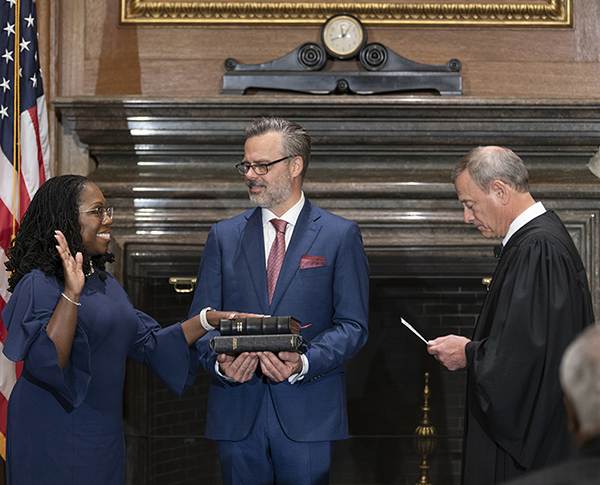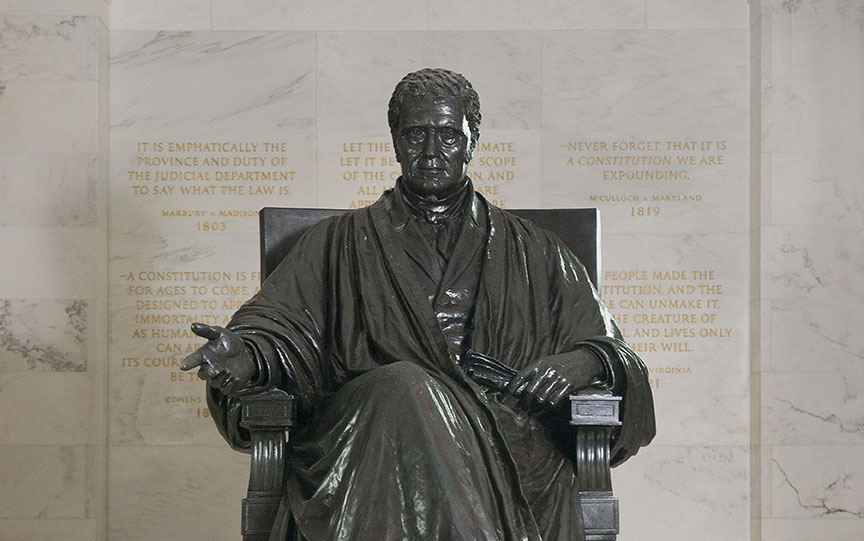On June 30th, 2022, the Honorable Ketanji Brown Jackson was sworn in as an Associate Justice of the Supreme Court (SCOTUS). She is making history as the first Black woman to serve on the Court. Justice Jackson, now the 104th Associate Justice of SCOTUS, joins a long list of Justices before her who carry the duty of hearing and making decisions on cases as the highest court in the Judicial Branch.
History of SCOTUS
The beginning of the Supreme Court goes back to the nation's founding years. Article III of the Constitution sets the federal court system. It states that:
"The judicial Power of the United States shall be vested in one supreme Court, and in such inferior Courts as the Congress may from time to time ordain and establish."
While the Constitution established the Supreme Court, it's "exact powers and prerogatives" weren't elaborated, which means how the Court would work wasn't ever specified. In response, Congress's first bill was the Judiciary Act of 1789, which established 13 judicial districts and the location of the Supreme Court. The first several sessions of the Court were focused on organizational proceedings, and its first case wasn't until August 3, 1791. Their first opinion was on the case of West v. Barnes.
Justices of the Supreme Court are each appointed by the President, and they have to be approved by the Senate. Justices serve on "good Behaviour," which is a life term. The Court's traditions have remained intact, from their black robes to quill pens being in the Courtroom.
Role of SCOTUS
Every year, SCOTUS is sent around 7,000 cases to be reviewed, yet they only hear around 100 a year. They're given the ability to decide on whether to hear a case or not via the Certiorari Act of 1925. The Court has 3 roles:
- "Last resort for those looking for justice"
- "Ensures each branch of government recognizes the limits of its own power" through judicial review
- "Protects civil rights and liberties by striking down laws that violate the Constitution"
The role of being a Supreme Court Justice is one of honor and dignity. Currently, there are nine Justices with one being the Chief Justice and the other eight as Associate Justices. They are named below:
- John G. Roberts, Jr., Chief Justice (2005-Present)
- Clarence Thomas, Associate Justice (1991-Present)
- Samuel A. Alito, Jr., Associate Justice (2006-Present)
- Sonia Stomomayor, Associate Justice (2009-Present)
- Elena kagan, Associate Justice (2010-Present)
- Neil M. Gorsuch, Associate Justice (2017-Present)
- Brett M. Kavanaugh, Associate Justice (2018-Present)
- Amy Coney Barret, Associate Justice (2020-Present)
- Kentaji Brown Jackson, Associate Justice (2022-Present)
- Opinions of the Court
- The Court releases "slip" opinions, which has the majority opinion, any dissenting or concurring opinions, and a decision summary.
- Argument Transcripts
- Provided by the Heritage Reporting Corporation, oral argument transcripts by SCOTUS are available.
- Case Dockets
- Case dockets have information about pending and decided cases that have been filed at the Court.
- Media Sources
- Any media files, including audio and video, are available for when they are cited in an opinion.
Government Information Online is produced by the staff at the Oklahoma State University Libraries Government Documents Department, a regional depository for U.S. Government and Oklahoma state government documents. We are located on the 5th floor of the Edmon Low Library. Our department website can be reached at www.info.library.okstate.edu/government-documents. For more information or for research assistance, contact us at 405.744.6546. or email suzanne.reinman@okstate.edu.
).png)




Comments